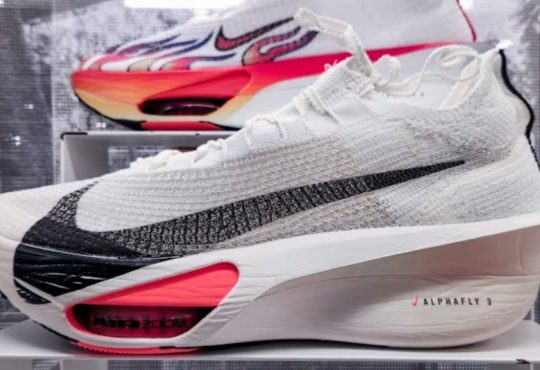Sneakers have evolved far beyond just functional footwear; they’ve become cultural symbols, fashion statements, and even investments. With collaborations, exclusive designs, and limited-edition releases, certain sneakers are now revered not only for their comfort but also for their scarcity and storytelling power. These shoes carry a history, a design ethos, and often a deeper connection to art, music, and popular culture. Let’s dive into the world of collectible sneakers and explore what makes these limited-edition releases so special.
The Evolution of Sneaker Culture: From Streetwear to Investment
1. The Rise of Sneaker Culture
Sneaker culture began as a subculture, growing alongside hip-hop and streetwear in the 1980s and 1990s, but today, it’s a global phenomenon. What started with brands like Nike and Adidas producing functional shoes for athletes soon transformed into a market where design, exclusivity, and innovation reign supreme. The launch of a new sneaker model or collaboration often sparks intense excitement and even a sense of urgency among fans and collectors.
2. Limited-Edition Releases: Scarcity Equals Value
What makes a sneaker collectible? One word: rarity. Limited-edition sneakers are intentionally produced in small quantities, making them scarce and, therefore, more desirable. Often, sneaker brands will release shoes tied to a specific event, collaboration, or milestone—like the Air Jordan 1 “Chicago” or the Yeezy Boost 350 “Zebra”—and once they’re gone, they’re gone. The scarcity fuels demand, and collectors who manage to secure a pair often see their value skyrocket over time, turning the sneakers into high-priced treasures.
Brands like Nike, Adidas, and New Balance have mastered the art of limited-edition releases, dropping exclusive designs with only a select number of pairs available. These shoes often sell out in minutes, and resell prices can surge to several times the original retail price. The thrill of the “sneaker drop” and the chase to secure a rare pair has become a modern-day ritual for sneaker enthusiasts.
3. Iconic Collaborations
One of the key factors driving the collectible sneaker market is the rise of high-profile collaborations that blend fashion, art, and sports culture into exclusive designs. A standout example is the partnership between Nike and Virgil Abloh’s Off-White. The “The Ten” collection revolutionized sneaker design with its deconstructed aesthetics, signature zip ties, and unique approach to footwear, making these sneakers an instant hit and a staple in street fashion.
Another influential collaboration is Adidas x Kanye West, which birthed the Yeezy brand and became a cultural phenomenon. The Yeezy Boost line, especially the 350 model, quickly became synonymous with luxury streetwear. Limited releases like the Yeezy 350 “Zebra” have elevated certain models to highly collectible status, with some proving difficult to obtain due to their scarcity.
Travis Scott’s partnership with Nike has also resulted in some of the most sought-after sneaker designs in recent years. The Grammy-winning rapper’s collaborations with the brand, including Air Force 1 and Air Jordan models, feature unique details such as removable swooshes and reversed logos, which have made these sneakers highly coveted by sneakerheads worldwide.
Lastly, New Balance’s collaboration with minimalist designer JJJJound has introduced a more refined and understated aesthetic. These limited-edition sneakers have attracted a dedicated following, elevating their status to collectible items within the sneaker community.
4. Sneakers as Art and Investment
Today, sneakers are often treated like art. Limited-edition releases are designed with the same attention to detail and craftsmanship as any fine art piece, and many collectors treat their sneakers like investments. Shoes like the Nike Air Mag, which was inspired by the film Back to the Future and released in a very limited run, can fetch prices far beyond their original retail value, sometimes even reaching tens of thousands of dollars.
Sneaker auctions and resell platforms, such as StockX and Stadium Goods, have turned sneakers into a legitimate investment market. Rare sneakers are bought and sold at auction houses, with prices often far exceeding the original asking price. Some collectors have even made a career out of flipping sneakers, purchasing them at retail prices and reselling them for much more.
5. The Stories Behind the Shoes
One of the most appealing aspects of collectible sneakers is the story they tell. Each release has a narrative, whether it’s linked to a cultural moment, a designer’s vision, or a special cause. For instance, Nike’s collaboration with the NBA during the 1990s brought forth the iconic Air Jordan 1—a shoe that not only changed sneaker design but also symbolized Michael Jordan’s rebellious spirit on and off the court. The design of the Air Jordan 1, including its “Bred” (black and red) colorway, has since become synonymous with basketball history and remains one of the most coveted models today.
Similarly, sneakers like the Converse Chuck Taylor All-Stars or Adidas Superstar have evolved into symbols of youth culture, art movements, and music subcultures. The stories behind these shoes are just as valuable as their designs, creating a deep emotional connection between the sneakers and the wearer or collector.
6. The Future of Collectible Sneakers
As sneaker culture continues to thrive, the demand for limited-edition and collectible sneakers is expected to rise. Advances in technology, such as the use of blockchain for verifying sneaker authenticity, may also change how collectors track and trade their shoes. Customization and personalization options will also grow, offering unique designs that tell a more personal story.
The future may also see sneaker brands continue to collaborate with unexpected artists, musicians, and even digital artists from the world of NFTs (non-fungible tokens), blurring the lines between fashion, art, and technology. As the world becomes more connected and globalized, the appeal of owning a piece of exclusive sneaker culture will only continue to rise.
7. Sneakerhead Communities: The Power of Collectors’ Networks
These groups thrive online through social media platforms like Instagram, Reddit, and dedicated sneaker forums, sharing knowledge, news, and passion for rare sneakers. Sneakerheads, as collectors and enthusiasts are called, often communicate about upcoming releases, exclusive collaborations, and resale opportunities.
These communities are not only about trading or selling sneakers but are integral in shaping trends and influencing sneaker culture. Sneaker conventions and meet-ups have become common where collectors display their prized possessions, swap shoes, and network. With sneaker drops being so highly anticipated, these social circles add an extra layer of excitement and exclusivity to the experience of owning a pair of collectible sneakers.
8. The Evolution of Sneaker Resale Markets
The resale market for sneakers has become an industry of its own, with platforms such as StockX, GOAT, and Stadium Goods helping facilitate sales of rare and limited-edition sneakers. These platforms authenticate shoes to ensure buyers get genuine items, offering reassurance in a market often plagued with counterfeits. What started as a niche secondary market has exploded into a multi-billion-dollar global business.
Resale values for certain pairs can skyrocket within days of release, with some shoes appreciating faster than stocks. For example, the Nike x Sacai LDWaffle, with its complex design and low production quantity, quickly gained traction in resale markets, and prices shot up well beyond the initial retail price. Many collectors treat sneakers as a form of alternative investment, buying not just to wear but as an asset to hold or flip for profit.
9. The Role of Sneaker Culture in Social Movements
Sneakers have also played a role in social and political movements, acting as symbols of defiance, identity, and solidarity. For example, the Air Jordan 1 “Bred,” with its association with Michael Jordan, was a pivotal part of the athlete’s rise as a global icon. However, its importance also grew when it became connected to the broader cultural landscape of the 1980s and 1990s, representing both rebellion and empowerment within urban communities.
Similarly, collaborations like Nike’s partnership with Colin Kaepernick for the “Just Do It” campaign featured special edition sneakers that aligned with the former NFL player’s activism. Sneakers have evolved into a powerful form of self-expression and a platform for amplifying causes, connecting the realms of sports, fashion, and social justice.
10. Customization and Personalization
As the sneaker market grows, so does the interest in personalized and custom-designed sneakers. Many brands now offer customization options, allowing buyers to add their unique touch, whether it’s choosing their colors and materials or even adding custom messages. High-end designers and artists are now entering the custom sneaker scene, crafting unique pieces that seamlessly blend fashion with art.
Custom sneaker artists, such as the famous @sbtg_sg and @thecustommovement, have made a name for themselves by transforming everyday sneakers into personal works of art. Their designs often incorporate elements of graffiti, pop culture references, or even bespoke logos, creating a new avenue for storytelling and self-expression. Customization offers a deeper connection to the shoes, allowing wearers to tell their own stories through the design of their sneakers.
More Than Just Shoes
Sneakers are no longer just shoes—they are cultural artifacts, investment opportunities, and symbols of individual style. Whether it’s through a limited-edition release, a high-profile collaboration, or the personal story that a particular sneaker holds, these shoes have the power to transcend mere functionality. For collectors, each pair is more than just a piece of footwear; it’s a chapter in the ever-evolving story of sneaker culture. So, whether you’re a casual enthusiast or a serious collector, understanding the value and history behind these limited-edition sneakers can add a whole new layer to your appreciation of footwear.





